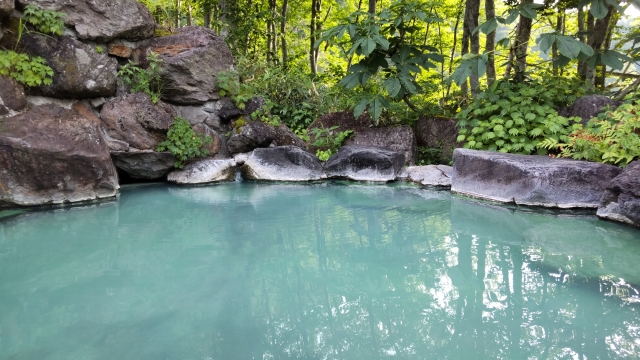
I think it was after the resort bubble burst.
I was appointed as a hot spring ambassador for a certain prefecture.
As a member of the top 10 scholars.
The prefecture has one of the largest numbers of hot springs in Japan.
However, there were no hot springs known to Japan.
Like Dogo or Atami.
In other words, a request to create a plan to revitalize hot spring resort tourism.
I think they asked for advice from a medical and rehabilitation standpoint.
For a year, visit hot spring areas in the prefecture and be absorbed in hot springs.
It’s a delicious job with jaws and feet.
It’s a pity that there is no such story now in the bad economy.
Anyway, we continued our trip, even if it was only one night, and became an authority on hot spring tourism.
After dinner, late at night, at dawn, after breakfast, during the day, and every hour, I go to the baths at the ryokan as well as to the independent hot springs outside.
Soak in the hot springs.
There is a word that says to lose to hot springs.
If you seek the medicinal benefits of hot springs, you must stay in the hot springs for about a week until you are completely exhausted.
Perhaps, rather than the effect of the hot spring ingredients, it was a heat treatment that increased the immune function to the last minute, I think.
This is a matter of life and death.
But miraculously, there may have been people who had cancer, cirrhosis, and diabetes.
Historically, there have been several dangerous treatments around the world, in which poisonous substances are used to cure intractable diseases.
Exactly, put everything on the line
I have two suggestions.
One is to establish it as a hot spring for residents.
If you stay at a ryokan, you’ll find the inn’s owner and cleaning staff taking a bath early in the morning.
In other words, it is local people, not tourists, who soak in the first hot spring after cleaning.
In the morning, most of the hot springs are local people, local daily public baths.
It is natural that public baths are for made for the cities and not in hot spring resorts.
Therefore, even if you don’t advertise to the outside, word might spread to the local residents that it is good for their health.
How about making the hot spring resort a hot spring health center for local residents.
In addition to weighing scales and sphygmomanometers, medical charts are also placed, and a nurse is the director.
Let’s open a hot spring rehabilitation laboratory. Present it to the academic community.
It hasn’t come true though.
There is no idea of spending taxes to improve health services for residents.
I want tourists to drop only money on sightseeing and go home.
If it is now, if elderly people’s housing with hot springs is developed, there may be migrants from the city.
The second is a drinking hot spring.
In Europe, 90% of people use hot springs for beverages.
Since there are many mineral springs, it is refreshing, and it is diluted with water and taken as a medicine.
As an intestinal regulator.
Only Japanese people can endure long soaks in sulfur-smelling hot springs.
Europeans may not be able to stand the strong smell of sulfur.
At any rate, in European resorts, it was little more than mineral hot spring pools.
But on the contrary, I don’t ask Japanese people about the custom of drinking hot springs.
This is because only hot water with plenty of sulfur can be considered a hot spring.
In Japan, if you dig about 200 meters, there are many mineral springs.
Luxury city hotels in Marunouchi also have hot springs dug deep.
I think I would have dug more than 1000 meters there.
Still, anyway, hot springs spring up even in front of the Imperial Palace.
Would someone like to commercialize Shinshu hot spring water PET bottles?
It seems to be effective for constipation.
We cannot guarantee it though.
Today`s new PCR positive staff: 0
Thank you for your hard work. Thank you.
Pulse oximeter 96/97/97
Blood sugar 137 Body temperature 36.0 degrees
I got cold by the aircon, so I’m going to take a bath.
Hot Spring Ambassador
CEO Yasunari Koyama








